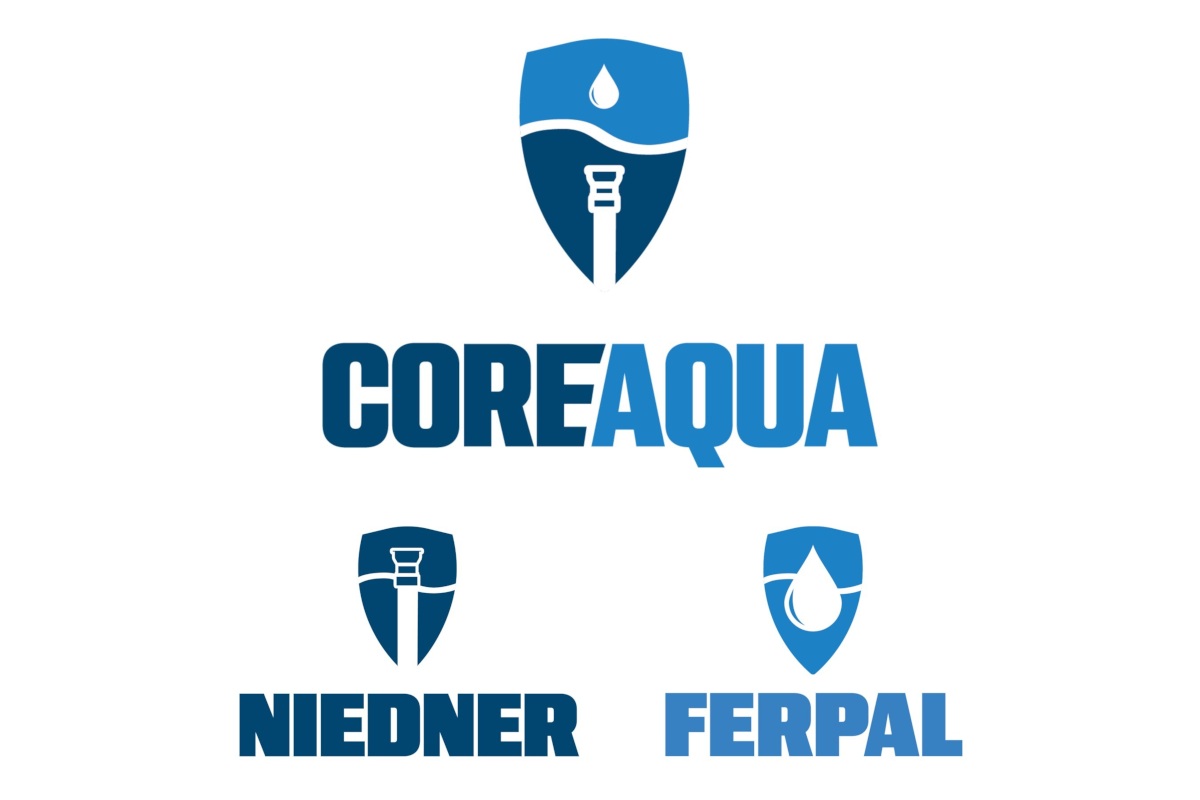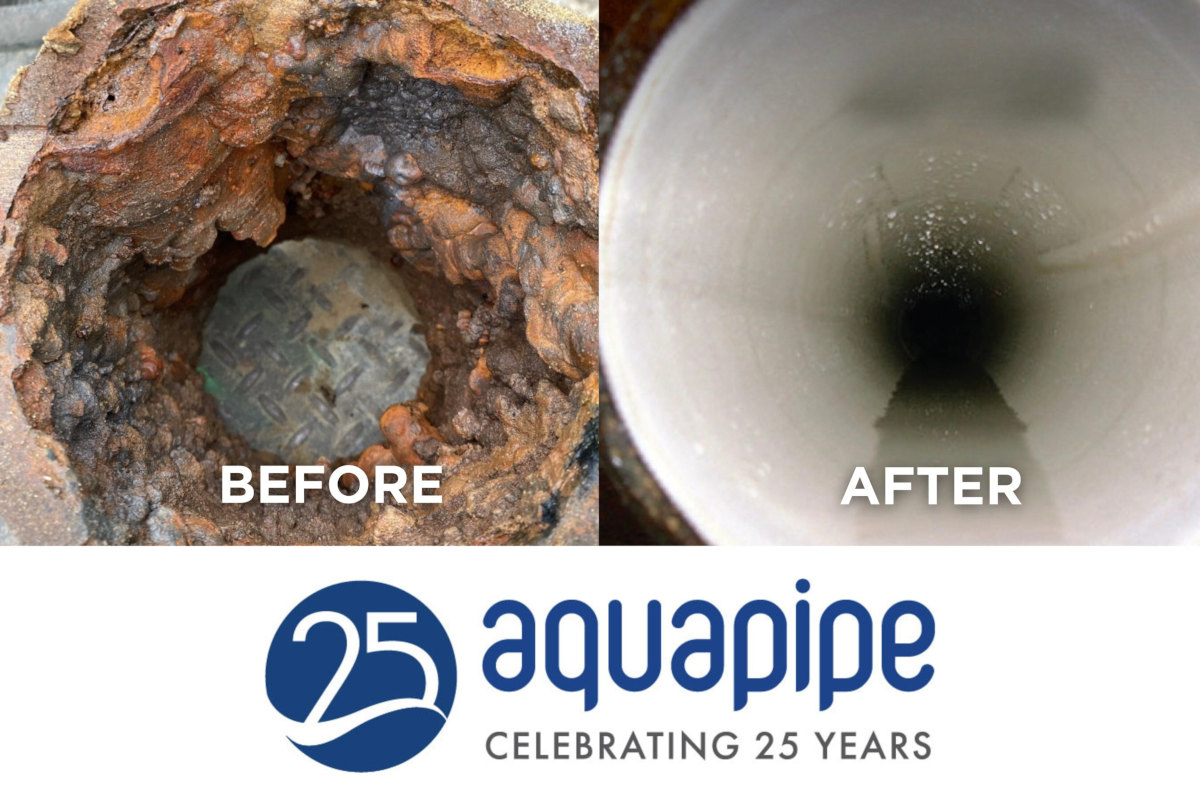
Manhole Rehabilitation in Victoria, British Columbia
April 22, 2015
In early 2014, the Capital Regional District (CRD) sent out a tender to rehabilitate a dozen manholes in Esquimalt, a suburb of Victoria, British Columbia. The manholes were in very poor condition due to hydrogen sulfide attack and would require a much-customised approach for repair due to the high flow passing through the 900-mm line they were connected to.When Mar-Tech Underground Services Ltd. first viewed the site and the manholes’ condition, workers could see that the 11 manholes situated just outside the Esquimalt Naval Base had become structurally unsound – making the job unsuitable for chemical grouting. In some cases, a person could take a manhole lid hook and put it through the wall.
 Mar-Tech’s solution was to re-construct each manhole using AP/M Permaform’s Permacast along with its ConShield MIC protection. Permacast fortified with this ConShield, unlike conventional shotcrete, is a proprietary mixture of cationic polymer that makes the concrete inhabitable for bacteria to colonize preventing the conversion of hydrogen sulfide gas into sulfuric acid. Because the product is a permanent ad mix, it can’t be washed off, chipped or delaminated.
Mar-Tech’s solution was to re-construct each manhole using AP/M Permaform’s Permacast along with its ConShield MIC protection. Permacast fortified with this ConShield, unlike conventional shotcrete, is a proprietary mixture of cationic polymer that makes the concrete inhabitable for bacteria to colonize preventing the conversion of hydrogen sulfide gas into sulfuric acid. Because the product is a permanent ad mix, it can’t be washed off, chipped or delaminated.Permacast MS-10,000 is a special formulation of fiber-reinforced cement engineered for underground structures. The system is installed by a factory-trained and certified network of applicators. The patented process allows for bi-directional centrifugal compaction applied uniformly from top to bottom for consistent thickness and easy inspector verification. Permacast offers engineered product, engineered installation practice and engineered design guide.

Before Permacast and ConShield can be applied to a deteriorated manhole, the manhole must be thoroughly cleaned.
Corrosion in Municipal Sewer Systems
Six decades after C.D. Parker discovered microbiologically induced corrosion (MIC), the industry often incorrectly refers to the deterioration of sewer pipe as “a gas problem.” The real culprit for concrete is MIC, a process by which sulfuric acid is produced in sewer systems when hydrogen sulphide gas and Thiobacillus bacteria interact.
 Biogenic corrosion often referred to as MIC because it is a process whereby anaerobic bacteria common to municipal waste flows create hydrogen sulfide gas that, in turn, is metabolized by sulfate reducing aerobic bacteria (Thiobacillus), which, in turn, create massive quantities of sulfuric acid.
Biogenic corrosion often referred to as MIC because it is a process whereby anaerobic bacteria common to municipal waste flows create hydrogen sulfide gas that, in turn, is metabolized by sulfate reducing aerobic bacteria (Thiobacillus), which, in turn, create massive quantities of sulfuric acid.Anaerobic (non-air breathing) bacterial form in raw sewage and naturally produce hydrogen sulfide gas (H2S) in sewer effluent. Factors contributing to rapid bacterial growth are temperature retention time, high biological oxygen demand levels and turbulence.
The more turbulent the effluent the more hydrogen sulfide gas is released. Evidence of this is most common at lift stations, manholes and the interior crown of pipe. This gas collects above the flow line where it combines with carbon dioxide (CO2). Both of these “acid” gases produce a mild, weak acid solution when they dissolve into the sewer’s moist environment. The CO2 produces carbonic acid, and the H2S produces thiosulfuric and polyphonic acids. Both acids combine with the calcium hydroxide in the concrete to reduce the pH of the surface. These mild acids are far too weak to cause any serious deterioration but they will lower the pH somewhat. As soon as the pH of the concrete falls from its initial levels of pH11 to around pH9, biological colonization of anaerobic (air breathing) Thiobacillus bacteria will occur.
The countdown to serious corrosion and collapse begins at this point since Thiobacillus bacteria have the unique ability to convert hydrogen sulfide gas into sulfuric acid (H2SO4) in the presence of oxygen. Different species of Thiobacillus colonize on the concrete surface above the liquid wastewater flow, lower the pH, then die, leaving the acid production to the next more aggressive species.
The pH of the concrete changes from alkaline (high pH) to very acidic levels (low pH). One such species is Thiobacillus thiooxidans, which is known to thrive in a 7 percent solution of sulfuric acid, which is equivalent to pH 0.5. Thiobacillus thiooxidans produce massive amount of pure sulfuric acid causing the rapid deterioration of concrete at these levels.
ConShield is an EPA-registered, anti-bacterial agent that is proven to be an effective preventative of MIC because it eliminates T. bacteria on contact like a pin prick to its thin walled cell.
The Application
The process uses a spincasting head, which is lowered and raised repeatedly by a winch on a crane arm. The process is somewhat like shot-creating. You can put on 1 in., 1.5 in., 2 in., whatever your designs require for structural manhole through a multitude of passes. It’s a really good application for manholes that need replacement especially due to Hydrogen Sulfide attack.”
The job in Esquimalt, however, involved another challenge besides getting the manhole walls back into operating condition. The CRD was concerned that hydro-blasting the manholes would cause debris to end up in their pump station. Knowing that setting up a road-side bypass for the 36-in. trunk line would be a costly endeavour – approximately three to four times the cost to repair each manhole – Mar-Tech had another plan.
Mar-Tech came up with an internal bypass system, so it could bypass the flow through the pipe itself, but still isolating the manhole. That way crews could clean the manhole, remove the material with a vac truck and once the manhole was all cleared, crews spincast the new concrete.
The technique for rehabilitating the manholes in Esquimalt worked well, and Mar-Tech hopes to apply the process on six more manholes, five of which are located on Department of National Defense property. Those manholes are in even worse shape than these first ones repaired in Esquimalt.
Manhole repair is just one of the many areas that Mar-Tech provides trenchless solutions. Its services have made it a one-stop shop for 17 years for almost anything in the trenchless field..
Bob Taylor is a director at Mar-Tech.




